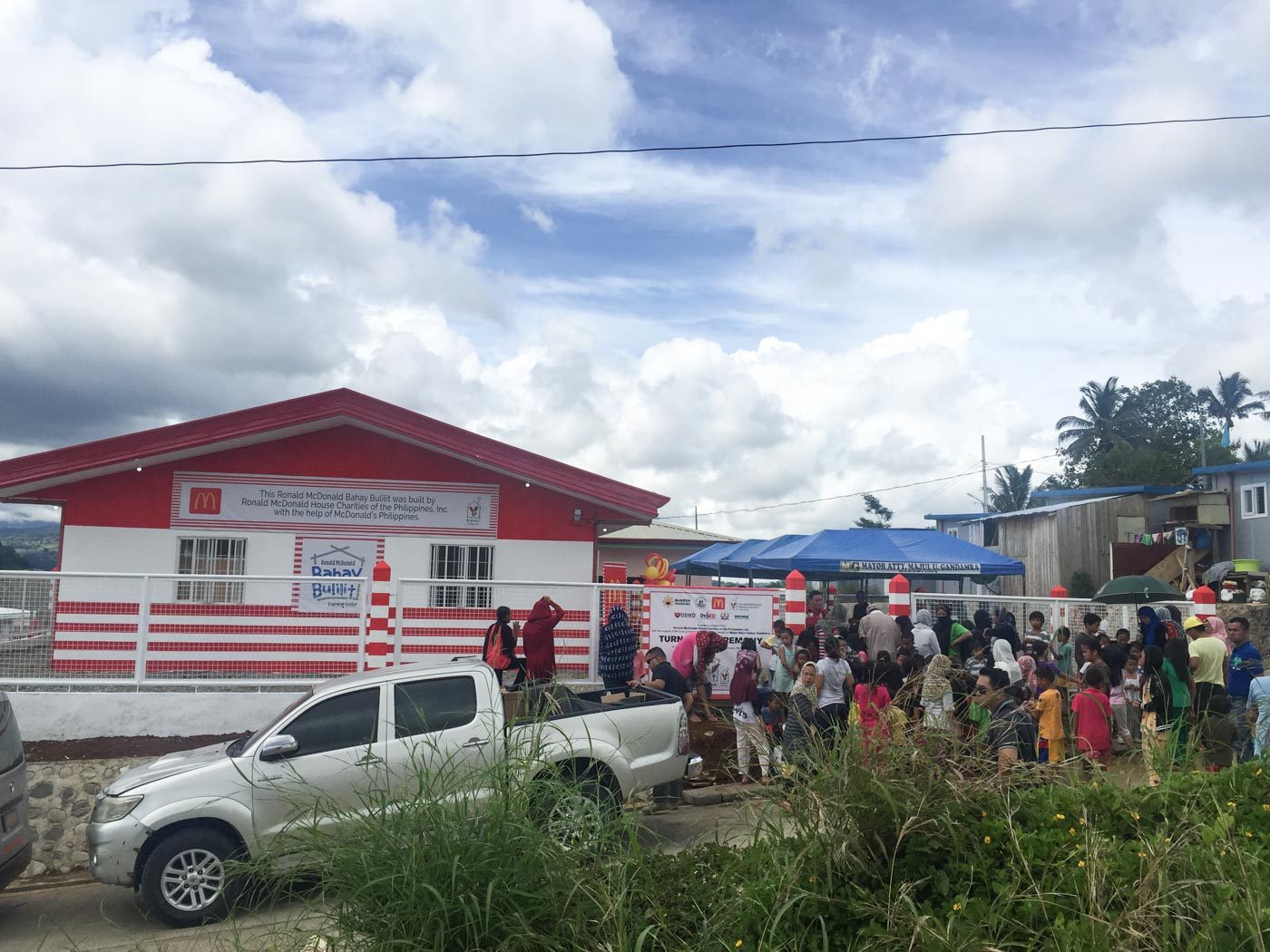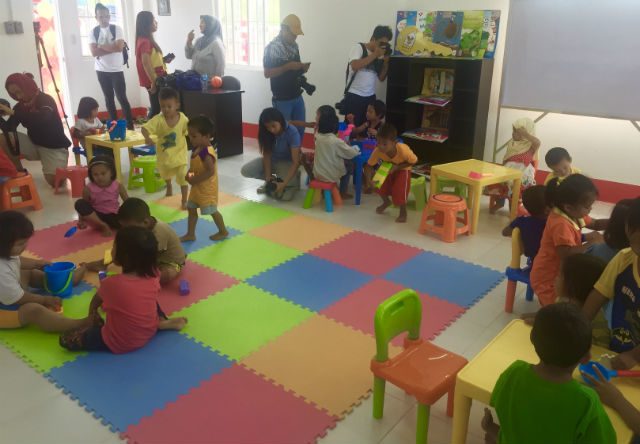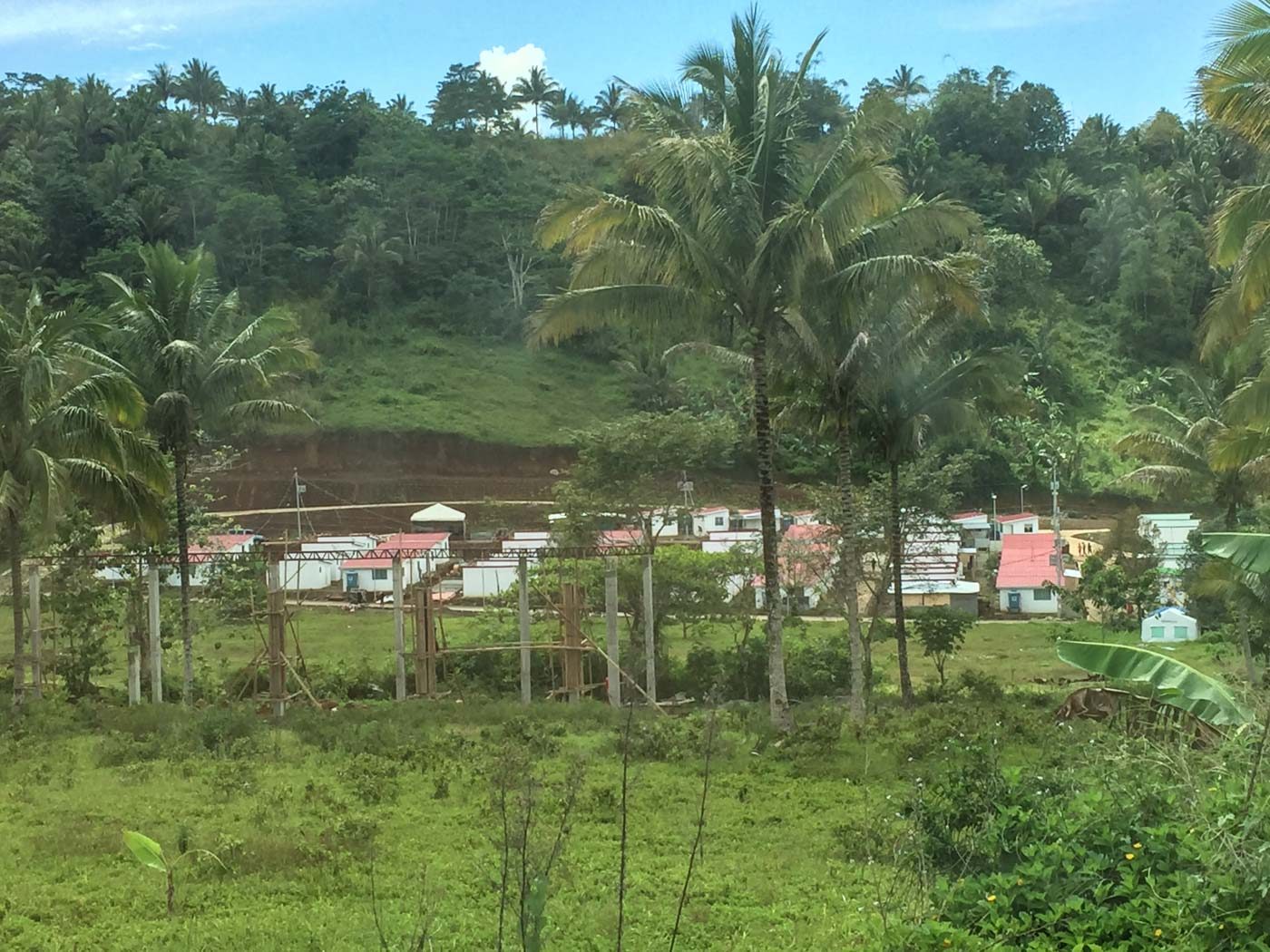SUMMARY
This is AI generated summarization, which may have errors. For context, always refer to the full article.

MARAWI CITY, Philippines – If it were not for the balloons that day or the red stripes painted on the walls outside, the building would have been like any other. But in the Barangay Sagonsongan relocation site in Marawi City, there it stood: a long-awaited children’s center.
On Monday, October 22 – the eve before the anniversary of the end of combat operations in Marawi City – the place was ready to be opened. (Marawi: 153 days and more)
The sky was turning grey and the air humid, but children and their parents waited patiently in line. On the other side of a wired fence, after all, was a room filled with legos, colorful mats, big picture books, and a playground.
For health and social services consultant, Dr Elma Gandamra, here is where they hope that minds of children 4 years old and below could be reshaped.
“Ang pinaka-importante ay maalis nilang utak doon sa pinagdaanan nila…. Especially itong mga kabataan na ‘to, na kumbaga dumaan sa paghihirap with the war and siege, para yung utak nila, magbago,” Gandamra said.
(The most important thing is they move past what they gave gone through…. Especially these children, who went through hardship with the war and the siege, their minds need to be renewed.)
Healing through play
Open daily, the center is where community social welfare and development officers help to facilitate play among children who fled the city during the Marawi siege. They also teach basic literacy and numeracy skills to kids who have yet to enrol in pre-school.
Raihana Makatoon, a mother of two, told Rappler she planned to bring her 3-year-old son to the center every day along with her 10-month old baby.
“Kung araw-araw iyan, araw-araw rin kami pupunta,” she said, noting she spent the better part of most of days at home as reconstruction of the city had yet to take place. (If it’s open daily, we’ll go every day.)
About two learning sessions will be held in the center daily for at least 70 children. During these sessions, Gandamra said they wanted to help children create new memories from after the war. This would be done through play as well as open and honest discussions with the children when needed.
“Alam mo naman yung bata eh, parang sponge. Kung ano yung nakikita nila, ‘yon ang ano (natutunan). We will try to erase those bad memories na mapapalitan iyan ng mga magagandang bagay sa paraan ng paglaro at pagbasa,” Gandamra said.
(You know children, they’re like sponges. They learn through what they see. We will try to erase those bad memories and replace them with better things through playing and reading.)

A year after the war ended, the children’s fears usually showed up in little ways. The sound of a popped balloon, for instance, left several of them children nervous and frightened.
“Takot sila pag narining sila ng mga putok, malakas na sound. Kaya nag-debriefing kami sa kanila na wala iyon, hindi sila tatamaan,” Gandamra said.
(They’re afraid when they hear loud popping sounds. But we tell them that it’s nothing and they won’t get hurt.)
According to Better Care Network’s Child Protection Working Group – an international network of organizations that focuses on child protection during emergencies – some of the effects seen in children who are traumatized from war and violence are often exhibited as behavioral changes.
These can include sleeping problems, nightmares, withdrawal, difficulty concentrating, and feelings of guilt, among others.
The Child Protection Rapid Assessment Report (CPRAP) done in October 2017 found this to be the case in a majority of the over 160,000 children who were displaced. The CRPAR was done by the Department of Social Welfare and Development with non-governmental organizations and international aid agencies.
Changes in behavior of affected children were often exhibited through an unwillingness to go to school, sadness, unusual crying and screaming, nightmares, as well as “disrespectful and aggressive behavior.”
According to Gandamra, the children will usually explain what they are afraid of and in these cases, social workers will use these discussions to debrief children. She also believed that so long as they learn and study, nothing bad will happen.
“(Sasagot kami na) Wala iyon, hindi parating pangayayari iyon. Kaya mag-aral sila ng mabuti para hindi na magkaroon ng ganoong pangyayari,” she said.
([We tell them] That’s nothing, nothing bad is coming. But they need to study hard so conflict won’t happen again.)
Preparing for the future
The place isn’t only for the children.
A little over a year before, more than 200,000 people fled Marawi after government forces and terrorists locked into what would be a fierce 5-month battle to reclaim the city.
The entire community needs this, Gandamra said, and all will benefit.

The Marawi local government chose to build the site in the Barangay Sagonsongan relocation center since many residents from the city’s most affected area lived near here. The MAA is a 250-hectare ground zero composed of the 24 barangays that sustained the most damage from the 5-month siege in 2017.
RMHC board member Adi Timbol said the Marawi Bahay Bulilit was also the largest of its kind and the first to have a separate playground to help facilitate the need for more play.
The creation of a protective environment for children in a community was among the recommendations of the CPRAP.
According to the report’s findings, key to preventing violence, abuse, neglect, and exploitation of children, was to reinforce positive social connections and coping strategies in a protective environment.
UNICEF guidelines on child-friendly spaces likewise pointed to the need of safe spaces as “bridges to early recovery and long‐term supports for vulnerable children.” This is because in child friendly spaces, activities are stable and structured with the focus of building youth’s resilience as well as improving well-being.
More than this, Gandamra also said residents and officials wanted it to be a place where they could instil in children early the importance of education.
“Nangyari iyon (digmaan) dahil yung mga ISIS karamihan doon, yung mga hindi nakapag-aral…if you noticed, during the all-out war, yung mga age nila bata…kaya dapat mag-aral sila ng mabuti para mag-progress yung mga utak nila at hindi mabuhos sa masamang ilog,” Gandmra said.
(During the war, many of the ISIS were those who didn’t finish their studies….If you noticed, during the all out war, they were young…the children need to study so their minds will progress and move away from these influences.)
She added, “Kailangan ‘to. Of course, kailangan.” (We need this. Of course, we need it.) – Rappler.com
Add a comment
How does this make you feel?
There are no comments yet. Add your comment to start the conversation.